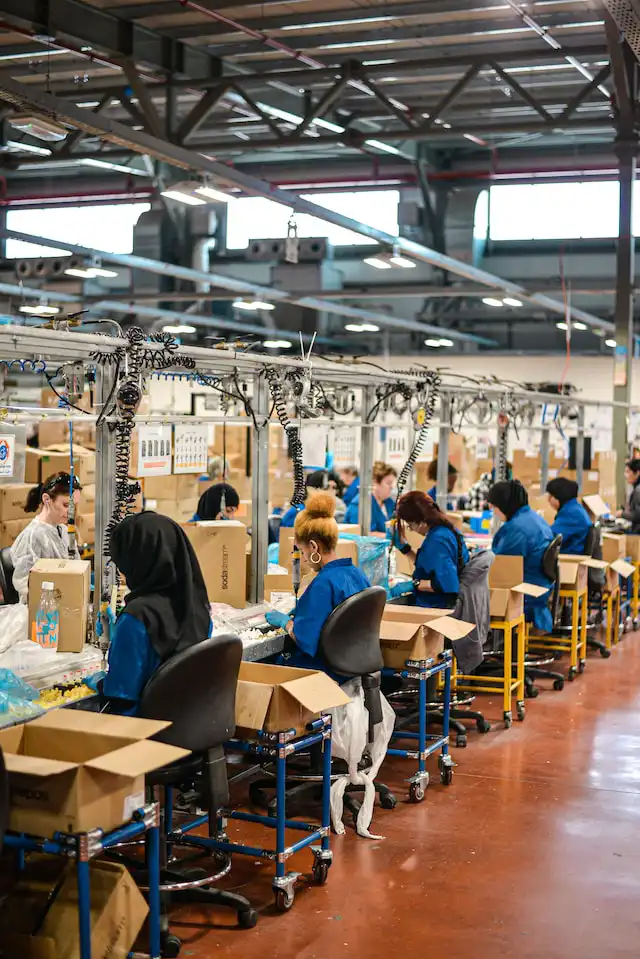
India Industrial Automation Outlook to 2020 - Growth Driven by Rapid Adoption of Modern Technology backed by Cost Saving Features
Region:Asia
Product Code:KR360
December 2015
146
About the Report
The report titled "India Industrial Automation Outlook to 2020 - Growth Driven by Rapid Adoption of Modern Technology backed by Cost Saving Features" provides a comprehensive analysis of the various aspects such as market size of the process and factory automation being an integral part of industrial automation. The market is segmented on the basis of
products, industrial network, applications, industry scale, imported and domestic procurement and control devices. The report covers market positioning of major players in factory as well as process automation along with their detailed company profiles. The future outlook of the industrial automation with the major growth drivers and challenges, trends and
development, SWOT analysis and macroeconomic variables are presented in the report.
Factory Automation
The factory automation market in India has been the fastest emerging segment in the industrial automation market in India. The factory automation industry in India has escalated remarkably at a CAGR of ~% from FY’2010- FY’2015. The control devices segment depicted the highest share of ~% in the factory automation market with INR ~ billion in FY’2015. Automotive industry has been an integral part of the factory automation since the inception of automation practices. The share of automotive sector was recorded to be ~% in FY’2015 due to assembly line mass production which includes wielding, cleaning, joining solutions, engine assembly.
Imports in factory automation industry contributed ~% in FY’ 2015, of which majority of sales were from foreign manufacturers namely Siemens, Rockwell Automation, Schneider Electric and others. Siemens Ltd. was the largest player in the market for factory automation products in India at ~% market share with INR ~ billion in FY’2015. A major portion of the company’s revenues is contributed by the brand image. The factory automation market in India has been estimated to grow at an astounding CAGR of ~%. The revenues are expected to reach INR ~ billion by FY’2020. The number of companies from different industries which would opt for automation of manufacturing plant will not only increase but automation companies or manufacturers in India
Process Automation
Process automation market contributed the largest market in industrial automation industry in India, commanding ~% share in the overall sales in FY’2015. In FY’2015, the process automation registered revenues worth INR ~ billion. During the year, the market recorded exponential rate of ~% relative to previous fiscal year especially on account of signs of
revival of growth and proportionate increase in GDP. Programmable Logic Controllers (PLC) has been an integral part of the process automation market since its inception. The share of PLC was recorded to be ~% with INR ~ billion in FY’2015.
The demand of process automation products has been primarily driven by pharmaceutical sector with ~% market share with INR ~ billion in FY’2015. This is largely due to huge demand of medicines and other pharmaceutical products. The process automation market in India has been largely dominated by pressure transmitters. Pressure transmitters market contributed ~% of the revenues generated by the process automation market in FY’2015. ABB ltd held the first ranking in terms of revenue generation from process automation market in India in FY’2015. The company had a grip over ~% market shares in terms of revenue during FY’2015
Given the present scenario, the process automation market is expected to continue its growth trajectory in the next five years reaching revenues worth INR ~ billion in FY’2020, registering a remarkable CAGR of ~% from FY’2016-FY’2020.
Key Topics Covered in the Report:
- Comparative Analysis of India Industrial Automation Market with Developed Countries
- Market Size of India Industrial Automation Market
- Introduction and Market Size of India Factory Automation Market
- Market Segmentation of India Factory Automation and Process Automation Market by products, applications, industry scale
- and imported and domestic procurement.
- Detailed company profile of major players in Industrial Automation with their market share.
- Future Outlook and Projections of India Factory and Process Automation Market
- Trends and development in the India Industrial Automation market.
- Growth Drivers in the India Industrial Automation market.
- Growth Restraints in the India Industrial Automation market.
- SWOT Analysis in the India Industrial Automation market.
- Entry Barriers and Prerequisites in the India Industrial Automation market.
- Business Models adopted in the India Industrial Automation market.
- Future Outlook and Projections in Industrial Automation market along with Analyst Recommendations
- Case Study Analysis: How much Investment is Automate a sugar plant in India
- Major Macroeconomic factors in India Industrial Automation Market
Scope of the Report
Products
Companies
Table of Contents
1. India Industrial Automation Market Introduction
1.1. Value Chain Analysis
1.2. History and Evolution
1.3. Comparison with Developed Countries
2. India Industrial Automation Market Size, FY’2010-FY’2015
3. India Industrial Automation Market Segmentation
3.1. By Major Automation Categories (Factory and Process Automation), FY’2010-FY’2015
3.2. By Sales Channels (System Integrators, OEMs and Distributors), FY’2015
4. India Factory Automation Market Introduction
4.1. India Factory Automation Market Size
4.1.1. By Revenues, FY’2010-FY’2015
4.2. India Factory Automation Market Segmentation
4.2.1. By Products (Control Devices, Industrial Network and Industrial Robotics), FY’2015
4.2.2. By Industrial Network (Wired Network, Wireless Network and Radio Frequency Identification System), FY’2015
By Wired Network (Managed switches and Unmanaged Switches), FY’2015
By Wireless Network (Sensors, Microprocessor system, Chipsets, WIFI and other chipsets), FY’2015
By Industrial Robots (Jointed Arm Robotics, Cartesian Robots, cylindrical robots and SCARA), FY’2015
By Control Devices (Motion & Drive, Relays, Switches & Sensors, DCS & SCARA) FY’2015
4.2.3. By Applications (Automotive, Mining, Packaging, Oil and Gas, Chemical, F&B, Pharmaceuticals and others), FY’2010 and FY’2015
4.2.4. By Industry Scale (Large scale, medium scale and small scale), FY’2010 and FY’2015
4.2.5. By Imported and Domestic Procurement, FY’2015
4.3. Company Profile for Major Players in India Factory Automation Market
4.3.1. Siemens Ltd.
4.3.1.1. Business Overview
4.3.1.2. Business Strategies
Focus on innovation-driven growth markets
Strong Relations with Customers
Adopting a Selective Approach
Strategic Partnerships with the Clients
4.3.1.3. System Integrators of Siemens Ltd
4.3.2. Rockwell Automation
4.3.2.1. Business Overview
4.3.2.2. Business Strategies
Convergence of Technologies
Strategic Alliances
Integrated Architecture System
Strategy for Oil and Gas Business
Strategic Alliances
4.3.2.3. System Integrators of Rockwell Automation
4.3.3. Schneider Electric
4.3.3.1. Business Overview
4.3.3.2. Business Strategies
Strong Business & Regional Focus
Building Products & Solutions
Investments to Drive Growth and Efficiency
4.3.3.3. System Integrators of Schneider Electric
4.3.4. ABB Ltd.
4.3.4.1. Business Overview
4.3.4.2. Business Strategy
‘PIE’ Formula
R & D Associations with Academic Institutions
Next Level Strategy
4.3.4.3. ABB Ltd System Integrators in India
4.3.5. Mitsubishi Electric Corporation
4.3.5.1. Business Overview
4.3.5.2. Business Strategies
Boosting Higher Level Growth
Increase in Competitiveness
Continuous Innovation
4.4. Competitive Landscape for Major Players in India Factory Automation Market
4.5. Market Share of Major Players in India Factory Automation Market, FY’2015
4.6. India Factory Automation Market Future Outlook and Projections, FY’2016-FY’2020
5. India Process Automation Market Introduction
5.1. India Process Automation Market Size
5.1.1. By Sales Revenues, FY’2010-FY’2015
5.2. India Process Automation Market Segmentation
5.2.1. By Control Devices (PLC, SCADA, DCS, Switches, HMI and RTU), FY’2015
5.2.2. By Applications, FY’2015
5.2.3. By Transmitters (Flow, Temperature and Level Transmitters), FY’2015
5.2.4. By Imported and Domestic Procurement, FY’2010-FY’2015
5.2.5. By Industry Scale (Large, Medium and Small Scale), FY’2010-FY’2015
5.3. Market Share of Major Players in India Process Automation Market, FY’2010-FY’2015
5.4. India Process Automation Market Future Outlook and Projections, FY’2016-FY’2020
6. Growth Drivers and Restraints in India Industrial Automation Market
6.1. Growth Drivers
Rapid Adoption of Modern Technology
Cost Savings
Government Initiatives
Increase in Skilled Labour & Income Distribution Pattern
Increase in Industrial Growth
Increasing Industrial Demand for Sustainability & Energy Efficiency
Access Data from Multiple Locations
Globalization of Marketplace
6.2. Restraints
Adherence to Global Regulations
Improper Infrastructure Set-Up
Customer’s Perception
Budgetary Constraints
Islands of Automation
Lower Participation of Local Players
6.3. Trends and Developments in India Industrial Automation Market
Remote Monitoring
Rise in Adoption of Robotics
Wide Adoption of IP/Ethernet based Communinications
Development of Apps
Training Programs by Automation Companies
Rising Competition
encouragement to Sustainable Development
Internet of Things (IoT)
Industry Wise Trends
6.4. SWOT Analysis of India Factory Automation Market
Strengths
Weakness
Opportunities
Threats
6.5. Entry Barriers in India Industrial Automation Market
Huge Set-Up Costs
High Research & Development Costs
Highly Competitive Market
High Dependence on Macroeconomic Conditions
Excessive Reliance on Vendors
Rules and Regulations of Importing and Exporting Country
7. Business Models Adopted in Industrial Automation Market
8. Recent Startups in India Industrial Automation Market
8.1. Grey Orange Robotics
8.1.1. Company Overview
8.1.2. Products
8.1.3. Business Strategies
8.2. ArkRobot
8.2.1. Company Oerview
8.2.2. Products
8.3. Magnet Works
8.3.1. Company Overview
8.3.2. Products
8.4. Robolabs Technologies Private Ltd
8.4.1. Company Overview
8.4.2. Products
8.4.3. Business Strategies
9. India Industrial Automation Market Future Outlook and Projections, FY’2016-FY’2020
Key Opportunities for Future
9.1. Cause and Effect Relationship Between Dependent and Independent Factors
9.2. Analyst Recommendations
10. Case Study Analysis- Automation for Sugar Manufacturing in India
10.1. Objective
10.2. Assumptions
10.3. Other Relevant Information
10.3.1. Proposed input output module details
10.3.2. Scope of Supply
10.4. Pre-Requisites
10.4.1. Following loops and equipments will be Automated and controlled
10.4.2. Salient Features of the system
10.5. Cost Analysis
11. Macro Economic Variables Affecting India Industrial Automation Market
11.1. FDI in India, FY’2010-FY’2020
11.2. Automotive Industry Size India, FY’2010-FY’2020
11.3. Pharmaceutical Industry Size India, FY’2010-FY’2020
11.4. India FMCG Market, FY’2010-FY’2020
11.5. Index of Industrial Production, FY’2010-FY’2020
12. Appendix
12.1. Market Definitions
12.2. Abbreviations
12.3. Research Methodology
Data Collection Methods
Variables (Dependent and Independent)
Multi Factor Based Sensitivity Model
Final Conclusion
12.4. Disclaimer
Research Methodology
Why Buy From Us?

What makes us stand out is that our consultants follows Robust, Refine and Result (RRR) methodology. i.e. Robust for clear definitions, approaches and sanity checking, Refine for differentiating respondents facts and opinions and Result for presenting data with story

We have set a benchmark in the industry by offering our clients with syndicated and customized market research reports featuring coverage of entire market as well as meticulous research and analyst insights.

While we don't replace traditional research, we flip the method upside down. Our dual approach of Top Bottom & Bottom Top ensures quality deliverable by not just verifying company fundamentals but also looking at the sector and macroeconomic factors.

With one step in the future, our research team constantly tries to show you the bigger picture. We help with some of the tough questions you may encounter along the way: How is the industry positioned? Best marketing channel? KPI's of competitors? By aligning every element, we help maximize success.

Our report gives you instant access to the answers and sources that other companies might choose to hide. We elaborate each steps of research methodology we have used and showcase you the sample size to earn your trust.

If you need any support, we are here! We pride ourselves on universe strength, data quality, and quick, friendly, and professional service.















